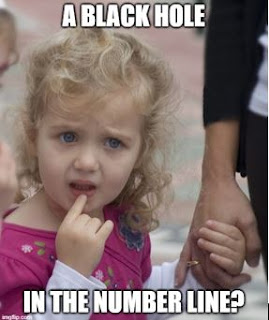The song the Twelve Days of Christmas is a well-known Christmas song, whose earliest known publication was in London in 1780. There are various versions of the lyrics, various melodies, and meanings of the gifts. As usual, this is all nicely summarized in Wikipedia https://en.wikipedia.org/wiki/The_Twelve_Days_of_Christmas_(song) .
PNC Bank, one of the largest banks in the US, has been calculating the prices of the twelve gifts given by my true love since 1984, and has trademarked its PNC Christmas Price Index ® . Two senior executives at PNC calculate the prices, and many of the details are available at https://www.pnc.com/en/about-pnc/topics/pnc-christmas-price-index.html#about , especially in their FAQ. In particular, they note that the price of services has generally increased while the price of goods has slowed. The price index is a humorous proxy for the general cost of inflation.
On day one there was 1 gift (the partridge). On day two there were 3 gifts (2 doves + 1 partridge). On day three there were 6 gifts (3 hens + 2 doves + 1 partridge). On day twelve there were 78 gifts, and 78 is the sum of the first 12 natural numbers, whose general formula Σn = n(n+1)/2 was known by Gauss in the 1700’s.
The cumulative number of gifts is 1 + 3 + 6 + … + 78, whose sum is 364. (One fewer than the number of days in a year. Coincidence?) Each of these numbers is called a Triangular number Ti , and the general formula of their sum is Σ Ti = n(n+1)(n+2)/6.
The PNC Christmas Price Index ®, or the Total Cost of Christmas reflects the total cost of the 78 gifts: one set of each of the gifts. For 2023 that cost is $46,729.86, versus $45,523.33 in 2022, a change of + 2.7%. The prior year’s change was 10.5%. The largest individual item in the index is not the five gold rings as I had thought ($1,245), but rather those leaping lords ($14,539, up 4.0%), followed by the swimming swans ($13,125 and unchanged for many years).
PNC also calculates the True Cost of Christmas, which is the cost of 364 gifts. For 2023 that cost is $201,972.66, a change of 2.5% over a year ago.
And PNC calculates a core index excluding the swans, which some time ago had been the most volatile item, and also an e-commerce index buying all items online.
The overall Bureau of Labor Statistics CPI for All Urban Consumers (CPI-U) increased 3.2% for twelve months ending October 2023. October is the closest month for CPI-U to the PNC data. CPI-U of course is based on a broad market basket of goods including food, energy, medical care, housing, transportation, etc., which are not the gifts given in the song, but CPI-U is a common measure of inflation. The PNC index is based on a very specific twelve items and is heavily weighted toward the lords and the swans.
The PNC website contains detailed information on its calculations, but it does not contain historical information on CPI-U. I used twelve-month October historical CPI-U percent changes from https://www.bls.gov/regions/mid-atlantic/data/consumerpriceindexhistorical_us_table.htm . Then I graphed the percentage changes of the PNC Christmas Price Index® , the PNC True Cost of Christmas index, and the CPI.
With such a small number of items, the two PNC indices fluctuate drastically. 2014 reflects a one-time increase in the cost of the swans. 2020 was the unusual year during the pandemic when some of the gifts (including the lords!) were unavailable and so the cost that year was zero. The two PNC indices were fairly close to CPI-U for five years starting in 2015 and again for 2022 and 2023. Maybe these PNC indices are pretty good.
PNC uses the Philadelphia Ballet to calculate the cost of the lords-a-leaping.
Here is the R code I used:
library(readxl)
library(ggplot2)
df1 <- read_excel("C:/Users/Jerry/Desktop/R_files/xmas.xlsx", sheet = 1)
df2 <- read_excel("C:/Users/Jerry/Desktop/R_files/xmas.xlsx", sheet = 2)
cpi <- round(df2$Percent_change,3)
df1 <- df1[c(3:13)]
year <- as.numeric(colnames(df1)[2:11])
total_cost_dollars <- colSums(df1)
total_cost_index <- vector()
true_cost_dollars <- vector()
true_cost_index <- vector()
for(i in 1:length(total_cost_dollars)){
true_cost_dollars[i] <- 12*df1[1,i] + 11*df1[2,i] + 10*df1[3,i] + 9*df1[4,i] + 8*df1[5,i] +
7*df1[6,i] + 6*df1[7,i] + 5*df1[8,i] + 4*df1[9,i] + 3*df1[10,i] + 2*df1[11,i] + 1*df1[12,i]
}
true_cost_dollars <- unlist(true_cost_dollars)
for(i in 1:length(total_cost_dollars) - 1){
total_cost_index[i] <- round(100*(total_cost_dollars[i+1]/total_cost_dollars[i] - 1),1)
true_cost_index[i] <- round(100*(true_cost_dollars[i+1]/true_cost_dollars[i] - 1),1)
}
df <- data.frame(cbind(year, total_cost_index, true_cost_index, cpi))
colors <- c("total_cost_index" = "red", "true_cost_index" = "navy", "cpi" = "grey")
ggplot(df, aes(x=year)) +
geom_line(aes(y=total_cost_index, color="total_cost_index")) +
geom_line(aes(y=true_cost_index, color="true_cost_index"))
geom_line(aes(y=cpi, color="cpi")) +
labs(title = "12 Days of Christmas", x = "Year", y = "Percent change", color = "Legend") +
scale_color_manual(values = colors) +
# scale_y_continuous(labels = scales::percent_format(scale = 1, prefix = "", suffix = "%")) +
theme(
legend.position="right",
plot.title = element_text(size=15, face="bold"),
axis.title = element_text(size=15, face="bold"),
axis.text = element_text(size=15, face="bold"),
legend.title = element_text(size=15, face="bold"),
legend.text = element_text(size=15, face="bold"))






















